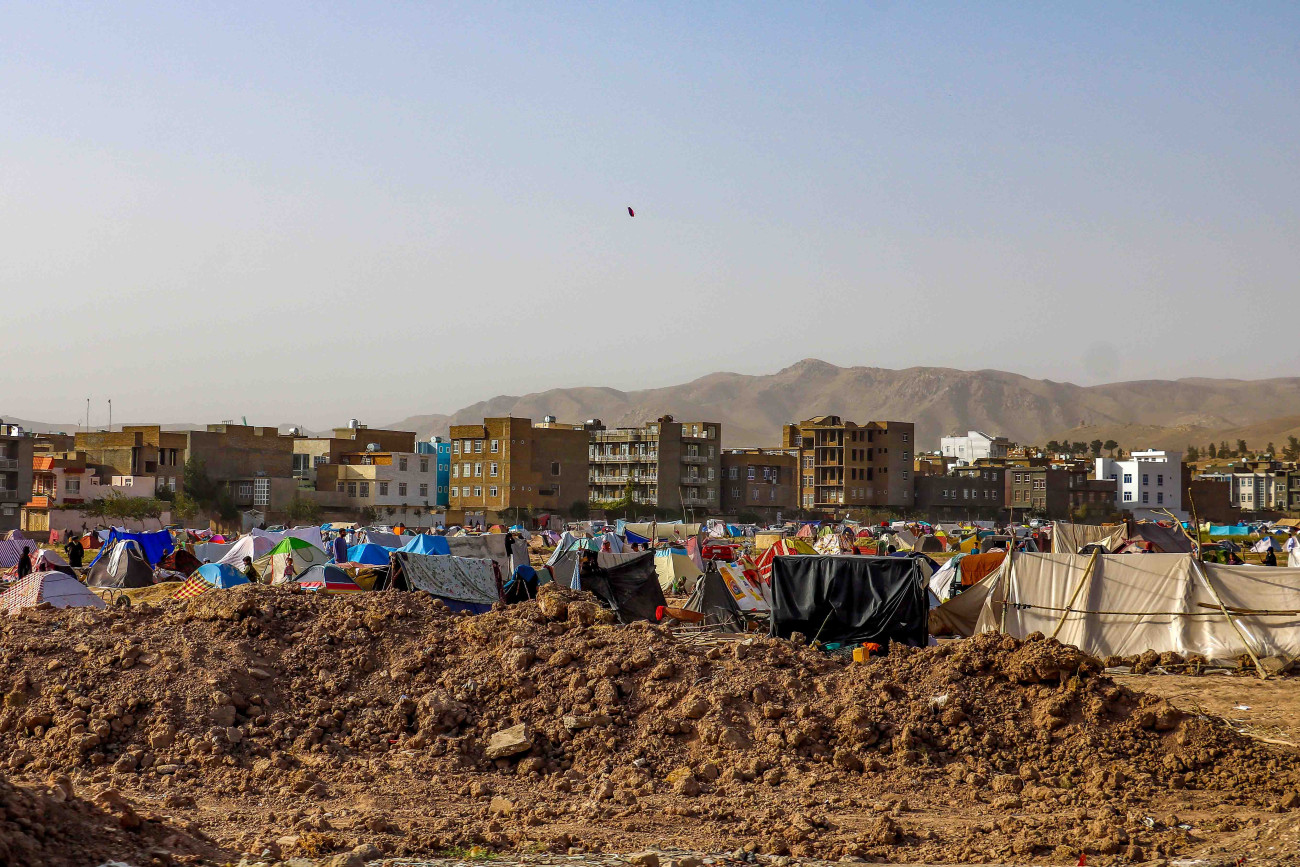
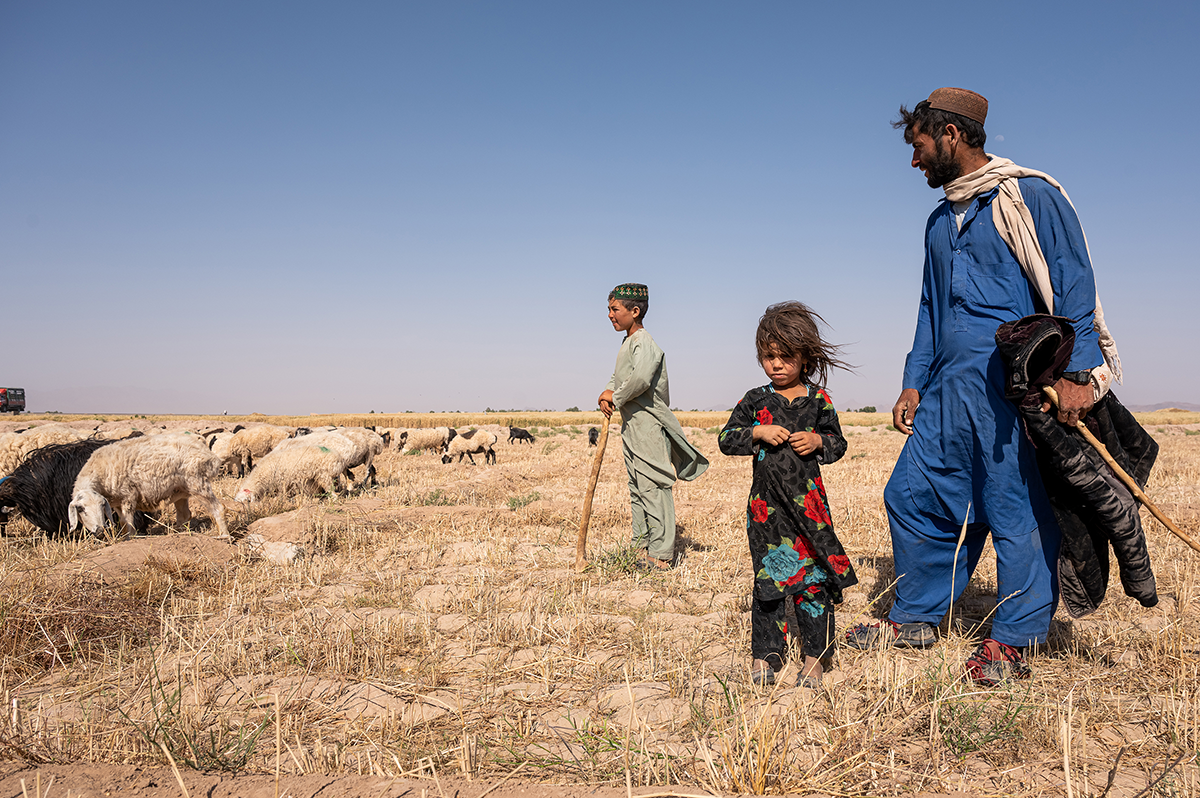
Summary
Even though it is one of the world’s lowest emitters of greenhouse gases, Afghanistan is among the 10 countries most vulnerable to climate change and severe weather conditions. Recent economic and humanitarian challenges, compounded by a political crisis of legitimacy and governance, exacerbate the situation, limiting the country’s ability to mitigate climate-induced fragility and build long-term resilience. To provide a conducive environment for addressing climate change, three critical challenges must be surmounted: the lack of climate financing, volatile regional dynamics that make pursuing collective action difficult, and the deepening crisis of governance.
Executive Summary
Even though it is one of the world’s lowest emitters of greenhouse gases, Afghanistan is among the 10 countries most vulnerable to climate change and severe weather conditions. Persistent drought, seasonal floods, and depletion of groundwater have caused crop failure, food shortages, and population displacement. Deforestation and land degradation caused by human factors, such as mismanagement and poor irrigation and agriculture techniques, put further stress on the environment and livelihoods. Recent economic and humanitarian challenges, compounded by a political crisis of legitimacy and governance, exacerbate the situation, limiting the country’s ability to mitigate climate-induced fragility and build long-term resilience.
To provide a conducive environment for addressing climate change in Afghanistan, three critical challenges must be surmounted. The first is the lack of climate financing. The country’s historical lack of capacity and expertise to access financing from established climate funding sources is further reinforced by its recent isolation and disconnection from financial, banking, and development networks. The second challenge is volatile regional dynamics that make pursuing collective action difficult. The increase in tensions between Afghanistan’s ruling authorities and the country’s neighbors over security and terrorism as well as access to water undermines its ability to utilize potential opportunities presented by regional cooperation. The third major challenge is the deepening crisis of governance that undermines private sector development, local initiatives, and innovative solutions to address climate change.
Afghanistan is one of the most vulnerable countries to climate change and environment-induced fragility,1 ranking fourth on the European Commission’s INFORM Risk Index 2024.2 Environmental degradation continues apace and climate-induced shocks have only expanded. In recent years, water shortages and irregular snow and rainfall patterns have had a major impact on livelihoods as over 60% of the population relies on rain-fed agriculture. Drought remains the most widely experienced shock across the country,3 with 64% of households reporting that they have been affected by it, a 25-percentage-point increase from 2021. Deforestation, land and pasture degradation, and floods continue to have severe impacts on livelihoods, food security, and displacement, increasing the risk of local conflict.4 Clashes between settled communities and nomadic tribes across northern, northeastern, and central Afghanistan over pasture and water rights have dramatically increased, and the Taliban’s support for nomadic pastoralists has made these conflicts more complex and severe.5 These climate-induced risks exist against the backdrop of one of the lowest national emission rates in the world, the result of Afghanistan’s persistent lack of industrial activity. In 2020, the per capita emission of greenhouse gases in Afghanistan was less than a ton, compared to the global per capita average of 6.5 tons.6
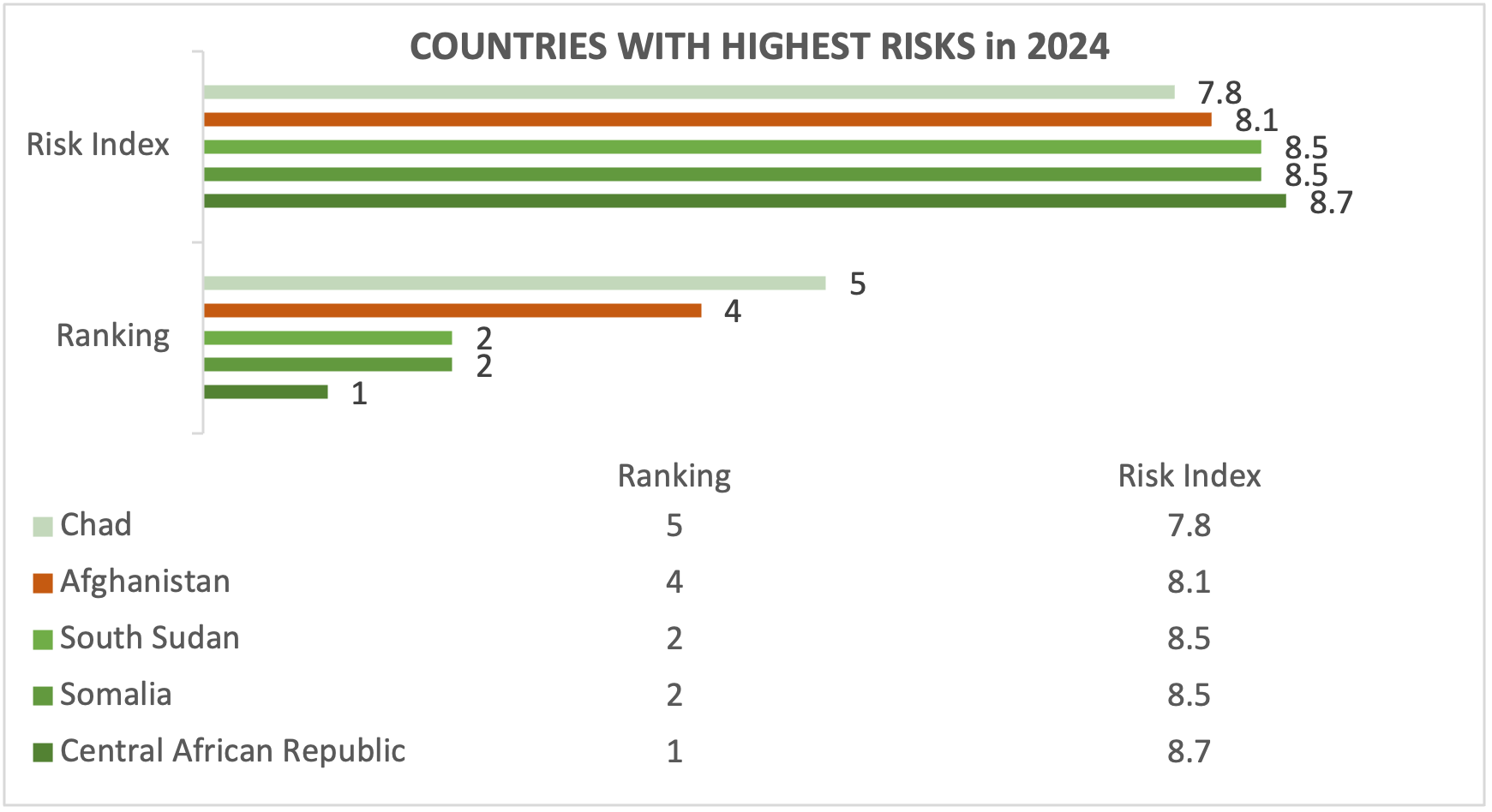
Yet the opportunities to address the adverse effects of these crises effectively and sustainably remain minimal. As the world struggles, on multiple levels, to mobilize financing, forge more effective partnerships, and devise creative tools to mitigate climate change, Afghanistan’s long-term vulnerability is only compounded by its inability to act promptly. Among the many hurdles to implementing a climate agenda in Afghanistan, at least three are insurmountable for the time being. These are the lack of financial resources, the difficulty of regional cooperation, and the implications of Taliban governance on private enterprise, innovation, and human capital development.
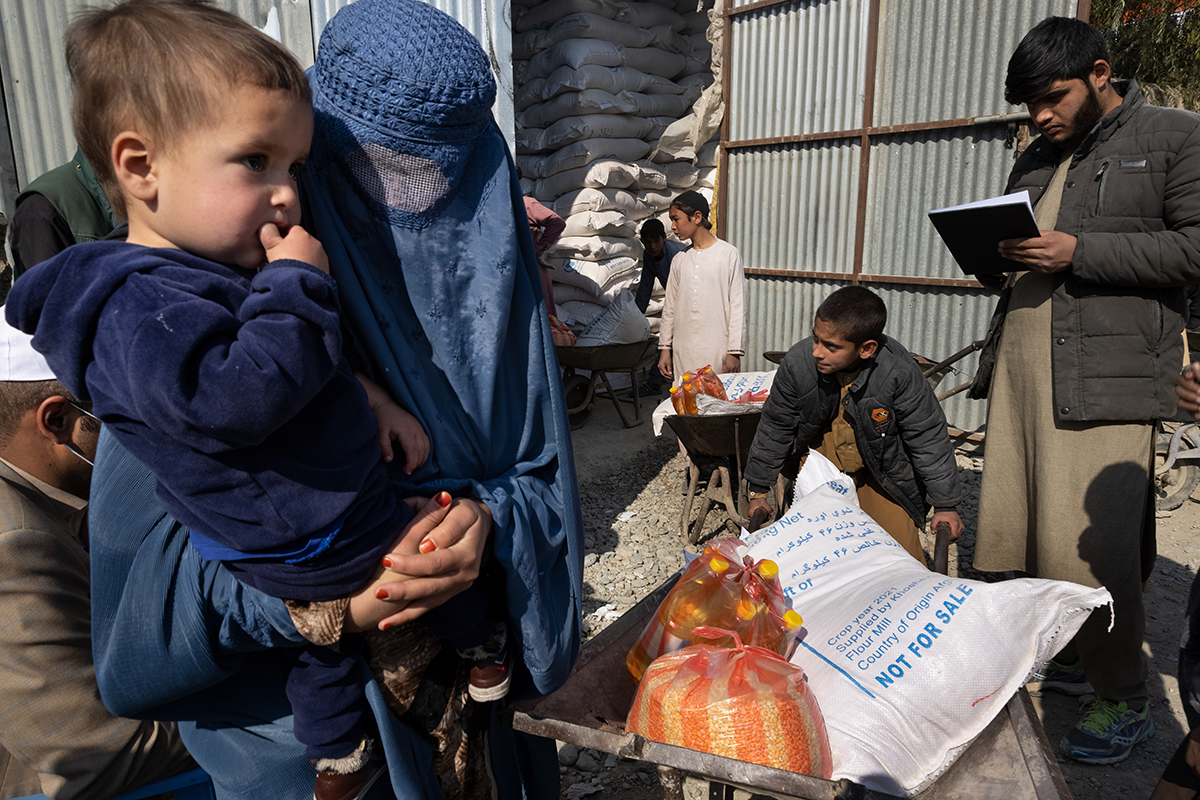
To begin with, effective strategies to mitigate the adverse impacts of climate change require financial resources that are not currently available in Afghanistan. The resources needed to mitigate the implications of climate change and adapt to changing weather and environmental conditions are far greater than what the national governments can provide. Across the developing world, climate-focused initiatives are increasingly funded through creative and hybrid mechanisms that merge national commitments, bilateral development aid, multilateral financing, and private sector partnerships. Under the current circumstances, the possibility of devising such multidimensional approaches is nearly nonexistent for the reasons explained here.
The current de facto authorities neither have the resources nor the will to invest in climate. Although the Taliban have reportedly increased the state’s capacity for generating revenue, their expenditure remains opaque and ambiguous. Their only announced budget had two characteristics: It was only for the ordinary operation of government agencies, and the resource allocation was heavily skewed in favor of the security sector — despite the significant decline in the threat level and the disintegration of the costly Afghanistan National Defense and Security Forces.7 The main burden of addressing the deepening humanitarian and economic crisis has fallen on the UN agencies and international non-governmental organizations (NGOs), which are already stretched thin by a shortage of funding and capacity.8 In particular, attending to internally displaced people and returnees, carrying out emergency response efforts to help victims of floods, and supporting farmers in the face of droughts and crop failure have all been left to international humanitarian organizations. The Taliban authorities provide little information about their fiscal management. All of these points signal that any public policy objective beyond controlling the population and cementing their grip on power is far from a priority for the ruling authorities.
The Taliban’s global isolation has made international climate financing and development assistance inaccessible for the country for the foreseeable future. Some have suggested that projects focusing on climate change could offer an apolitical space for collaboration between the authorities in Kabul and foreign donors.9 The recent UN Independent Assessment also recommends moving away from emergency response towards projects that are long-term and developmental in essence.10 However, there is no indication thus far from any major donor (either countries or multilateral institutions) that they are willing to fund development projects in Afghanistan. The country’s development partners have not resumed operations since their suspension in August 2021. Those that remain engaged channel minimal funding through UN agencies to fund humanitarian programs. Bilateral development cooperation is at its lowest level in two decades. Although some entities, like the European Union, have resumed their diplomatic presence in Kabul and fund humanitarian activities, they are yet to engage with the regime more substantially. The EU provided €174 million in humanitarian aid in 2022 and €81 million in 2023,11 most of which went to emergency food assistance, health, and education. In September 2023, it announced the release of a €140 million aid package, focusing partially on sustainable agriculture and climate resilience without specifying the details.12 Japan, a country with a particular focus on sustainable agriculture in its foreign aid programs, has also provided some aid short of funding new development programs. It is unclear whether Japan would pursue a specifically climate-focused aid policy in Afghanistan and whether that would alone make a difference. Taken together, Japan and the two largest donors in the EU, France and Germany, accounted for around 70% of 2021 global Official Development Assistance (ODA) going to climate-related projects.13
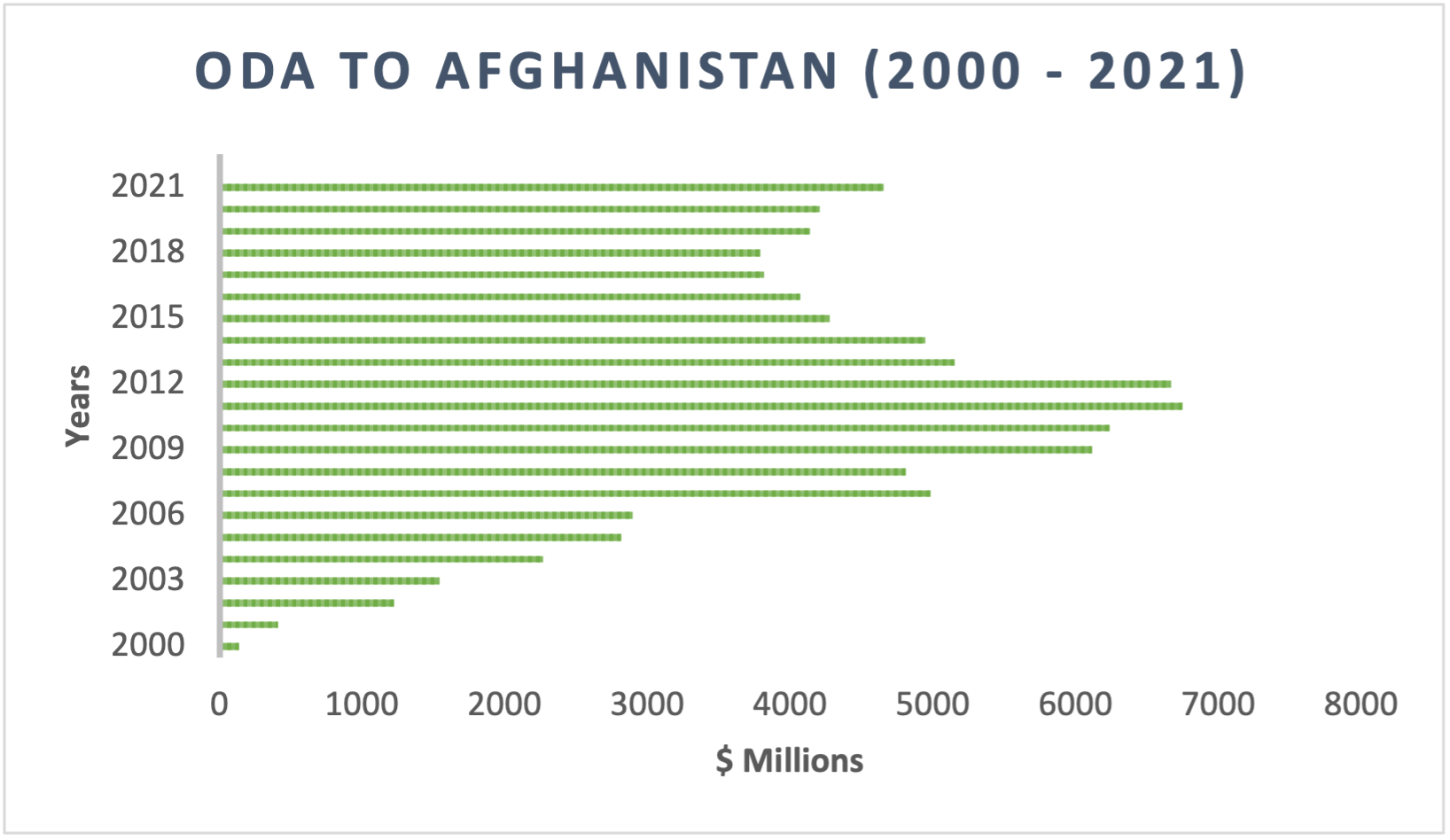
Similarly, established international climate financing sources remain inaccessible to Afghanistan under the current circumstances. Even before the Taliban returned to power, the country was struggling to access funding from initiatives such as the Green Climate Fund (GCF), the Global Environment Facility’s (GEF) various funding schemes, and the Adaptation Fund (AF). According to assessments carried out by its previous government, Afghanistan needed over $6.6 billion for mitigation of the implications of climate change and another $10.7 billion for adaptation to changing climate and environmental conditions between 2020 and 2030.14 Yet it had received just $40 million in combined funding from the GCF, GEF, and AF, and even that was only possible when organizations such as the United Nations Development Program acted as intermediaries. Lack of technical expertise and coordination prevented the country from qualifying for direct climate financing.15
International climate financing mechanisms fail to reach beneficiaries in the least developed countries (LDCs) amid high competition over limited resources. The world is yet to meet its goal of raising $100 billion in annual climate financing for developing countries.16 By some estimates, less than 11% of funding through such international initiatives reaches LDCs. Some studies, such as the International Institute for Environment and Development’s 2021 Follow the Money report, suggest their share is even lower, at less than 3%.17 The UN Environment Program’s 2022 Adaptation Gap Report showed that adaptation funding to developing countries is five to ten times lower than the estimated needs.18 For Afghanistan, its crisis of international legitimacy, its disconnection from the global financial architecture and multilateral platforms, and its lack of technical capacity make it impossible to tap into such resources anytime in the near future. Afghanistan was absent from the 2022 UN Climate Change Conference (27th Conference of the Parties, COP27) in Egypt and COP28 in the UAE at the end of 2023. It will also not be able to make use of the upcoming Loss and Damage Fund, introduced at COP27 and targeted particularly at helping the poorest countries to address the unavoidable consequences of climate change. The country is already experiencing these consequences through issues like crop failure, which has been prevalent in recent years throughout the country.19
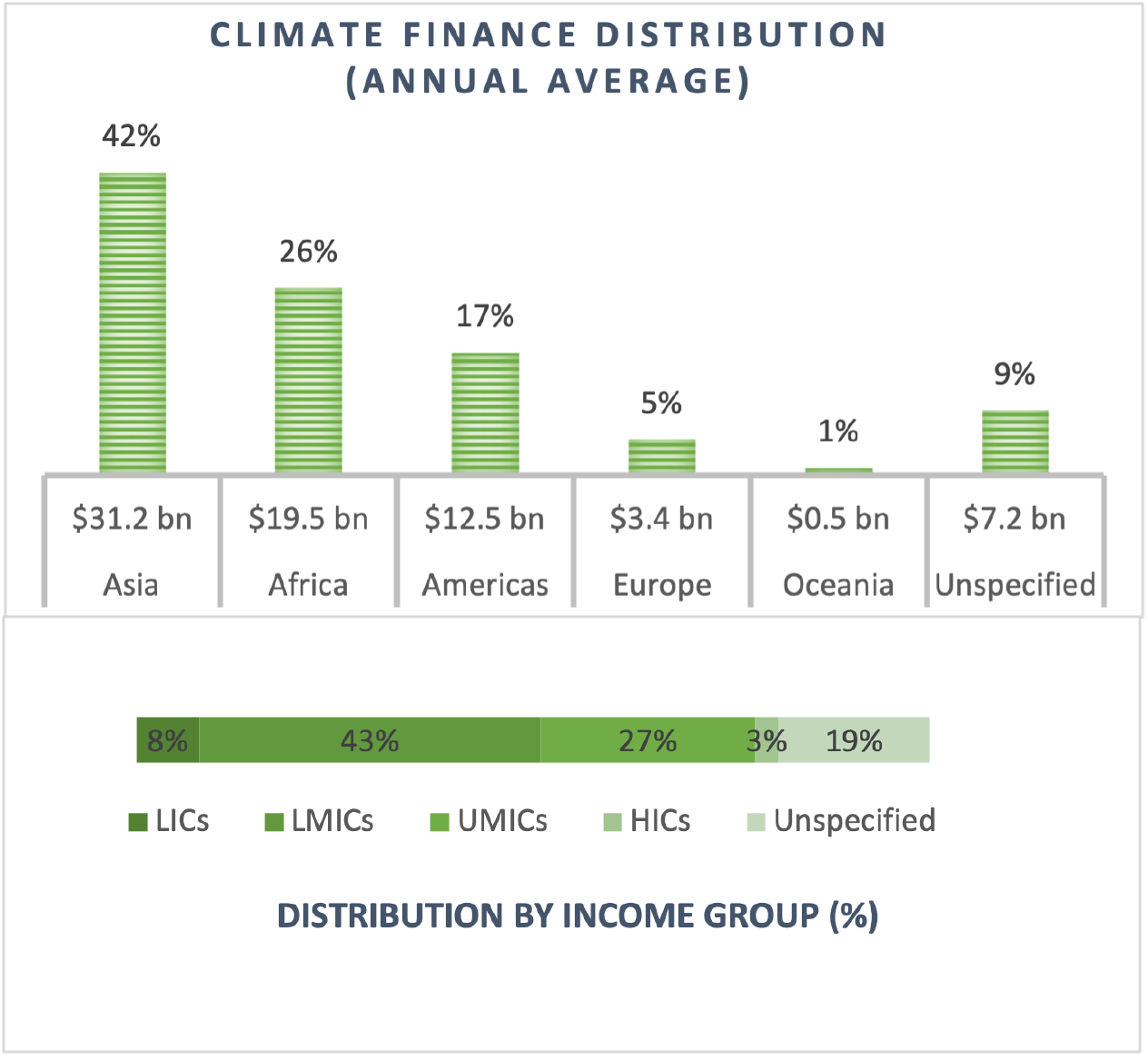
Second, the current authorities in Afghanistan cannot work with their counterparts in the region to address climate change as a common problem. Climate change does not recognize political borders. Therefore, to effectively mitigate climate fragility and its socio-economic impacts, Afghanistan would inevitably have to work with its neighbors. However, the Taliban regime has proven increasingly difficult for the region to work with. And in areas that it has engaged the region, climate change and the environment has never been on the agenda.20 Its tensions with Pakistan — a vulnerable country that has prioritized addressing climate change — over terrorism and security-related issues are on the rise.21 As a result, Islamabad has decided to deport nearly 2 million refugees back to Afghanistan.22 More than half a million people have already been forcibly repatriated to the country, adding to an already overwhelming humanitarian crisis, particularly in the wake of the deadly earthquakes in Herat in October 2023. This process will further minimize the space and collective ability to work on climate issues by diverting resources to returnees as the UN and other humanitarian agencies fail to meet their bare minimum targets for the year.23 Moreover, the mass return of refugees will also put additional stress on means of livelihood, such as land, water, and local chains of food production. A considerable number of the returnees go, after multiple decades of living in Pakistan, to communities that are unable to integrate them as people already struggle with a shortage of food and water. As a result, deforestation could increase in Afghanistan’s eastern provinces and local conflicts over access to resources, like irrigation water and pasture lands, will expand with new layers of complexity.
The Taliban walks a tightrope with Iran as tensions over water access rights in the Helmand River basin persist. The Taliban, despite releasing water from the Kamal Khan dam in 2022, maintains that the reduced water flow is because the aggregate available water for usage is not enough to satisfy both countries’ needs. The governing 1973 bilateral water agreement allows Afghanistan to decrease the discharge rate in the case of a drought or inadequacy of water because of other meteorological reasons. Although satellite imagery shows that Kamal Khan dam is nearly dry, complaints from Tehran over reduced access to water have resurfaced in recent months24 Iranian authorities claim that even though the new water year (running from Oct. 1 to Sept. 30 of the next year) has begun, Afghanistan has not yet released the amount of water that it should from the Helmand River. Amid such tensions, the Taliban regime even lacks the needed technical capacity to engage in informed regional dialogues over transboundary resource sharing.
In northern Afghanistan, the construction of the Qosh Tepa canal has challenged the region’s current water regime. The Taliban’s completion of the canal is expected to redirect 15-20%, by modest estimates, of Amu Darya’s water toward Afghanistan, leaving agricultural land on the northern side vulnerable.25 The construction of the second phase of the canal that the Taliban has announced will put tangible stress on access to water in Central Asia, particularly for the cotton fields in Uzbekistan and the 800-mile-long, life-saving Karakum canal in Turkmenistan.26 While Ashgabat has been largely quiet, Tashkent has raised concerns in public and private with the authorities in Kabul. Uzbek officials continue voicing their discontent over the canal even as the country recently signed over $1 billion worth of new trade deals.27 In response, the Taliban authorities exploit the country’s lack of involvement in regional treaties governing water access rights in the Amu Darya as giving them a free hand to do whatever their interests require.28 Central Asia at large faces substantial water shortages: 30% of the region’s glaciers have melted in the last five decades.29 Uzbekistan’s water deficit of 3 million cubic meters will increase to 7 billion by 2030 and 15 billion by 2050 as the Amu Darya is expected to lose 15-40% of its water by the end of the century.30 Such a regional resource landscape means that tensions are only poised to grow.

Potential investments from China, the only country seemingly interested in cooperation with the Taliban, are yet to prove climate-friendly. Nearly 80% of China’s overseas energy investment has been in fossil fuel-related projects.31 One of the first projects China contracted after the Taliban’s return to power was to extract oil from Amu Darya.32 Beijing is also keen on securing contracts to extract rare earth minerals in Afghanistan as part of a broader global push. If successful, such projects could put intense stress on Afghanistan’s depleting water reserves. Most rare earth minerals used in new technologies, such as semiconductors and microchips as well as solar panels and ionized batteries, require high water consumption for their extraction process. Mining one metric ton of lithium, for example, requires over 2 million liters of water.33 Although such projects could generate significant revenues amid an economic and humanitarian crisis, their aggregate effects will be negative if the environmental risks are not mitigated.
Such regional dynamics could have dual negative implications for the climate in Afghanistan in the longer term. On the one hand, they prevent Afghanistan from tapping into the collective regional potential to address what appears to be a monumental challenge for the century. Neighboring Pakistan, by contrast, is beginning to play a role in shaping global discourses on climate and the environment. Its efforts are garnering support from the international community, especially the multilateral development agencies and climate-financing institutions.34 Central Asian countries have noticeably increased their regional coordination and cooperation in recent years as well, particularly on economic issues around climate and energy.35 All of this could translate into the potential for developing context-specific technical know-how and leveraging multilateral climate financing instruments, private sector investment, and energy transition initiatives, all without Afghanistan’s participation. Moreover, countries in the region will try to find mechanisms to adjust to the potential impacts of the Taliban’s climate diplomacy on their economic and environmental vulnerabilities. Turkmenistan, for example, has already begun engaging German companies to modernize its irrigation infrastructure, particularly the Karakum canal that brings water from Amu Darya to the capital city of Ashgabat. When completed, this could enable the country to offset not only the impact of the Qosh Tepa canal on its agriculture but also the resulting decline in water flow in the Amu River basin.36 Uzbekistan, which has been pursuing desalination at the Caspian Sea for years has formed several partnerships with the UAE’s renewable energy company, Masdar, to develop the largest renewable energy program in the region.37 In such a regional environment, Afghanistan will still be in a disadvantageous position and more vulnerable to climate change in the long run compared to other countries around it.
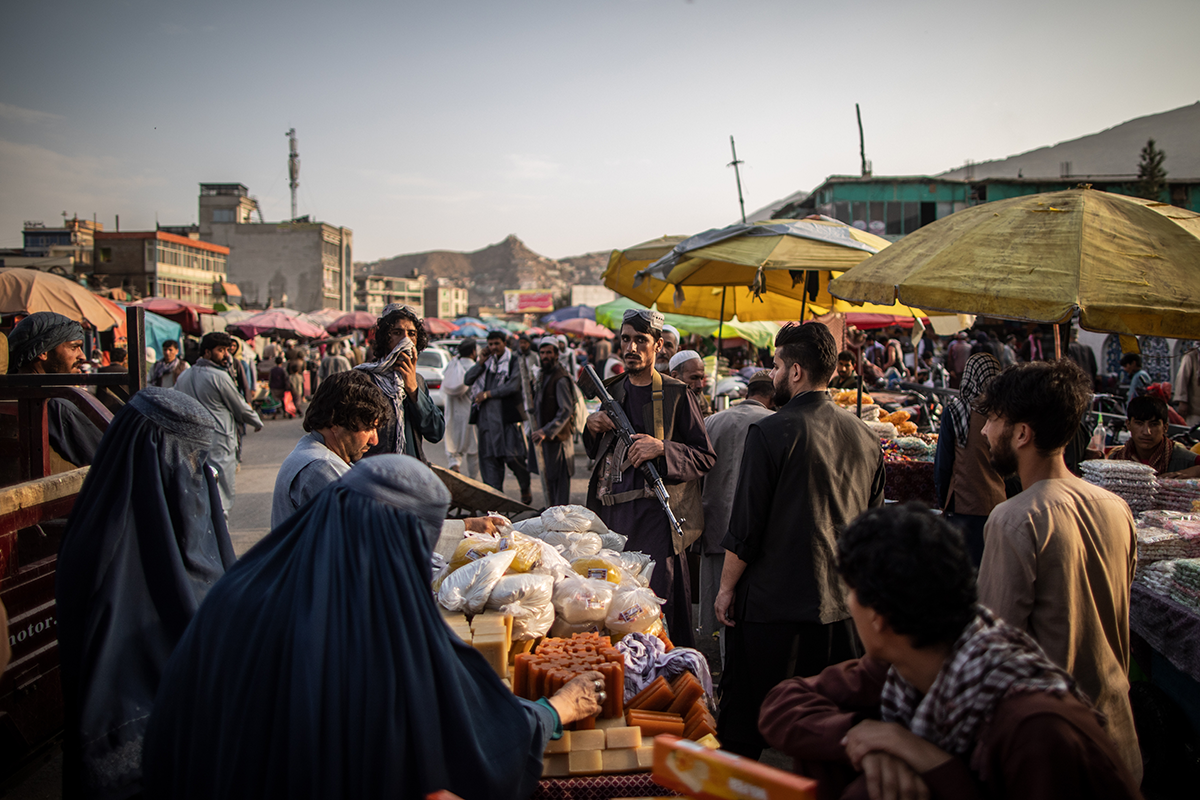
via Getty Images.
The third substantial challenge in addressing climate-induced vulnerabilities is the ongoing crisis of governance. People in Afghanistan have been suffering from the Taliban’s restrictive edicts as well as their ad hoc persecution.38 In parts of the country most severely hit by climate issues like drought and flood, the Taliban have particularly been brutal. In northern Afghanistan where agricultural outputs have decreased by more than 30%, reports of arrests, arbitrary killings, forced displacement, and preferential treatment in the disbursement of humanitarian aid continue to surface.39 In central Afghanistan, forced displacement, extortion, and destruction of arable land, fruit-bearing trees, and sources of irrigation water have been constant methods of persecution and exclusion by the Taliban or groups supported by them.40 These are the areas most severely affected by a multi-year drought that has caused crop failure and food shortages. The US Agency for International Development’s famine early warning network has warned that all of northern, northeastern, and central Afghanistan will face an emergency level of food insecurity between October 2023 and April 2024.41 The Taliban’s opium ban could also exacerbate climate-induced fragility as well, particularly in the southern and southeastern parts of the country.42 The substitution of wheat as an alternative crop could further deplete water resources in areas already suffering from a third consecutive year of drought. Additionally, the opium ban and the drought may result in the internal displacement of farmers, putting extra stress on resources and the environment.
People lack the resources and the space to collaborate and coordinate to mitigate climate-induced fragility. While effective climate strategies are often very people-centric, Afghanistan’s current authorities do not appear amenable to empowering people at the local level. They fear that any platform that brings people together could lead to mobilization and dissent against them and thus should be curtailed. In such an environment, humanitarian programs aimed at distributing resilient seeds to farmers, for instance, are unlikely to go very far in addressing the root causes of the problem. Reports on humanitarian aid efficiency and accountability during the past two years indicate that such programs are also prone to being misused and failing to reach the intended beneficiaries.43 According to a recent report by the American Special Inspector General for Afghanistan Reconstruction (SIGAR), Taliban authorities have created fake NGOs to divert foreign funding in the education sector.44 Similar issues are likely to crop up when developing projects focusing on climate. Moreover, the Taliban’s continuous discriminatory politics and exclusion of women from the economic space further hamper efforts to meaningfully address climate issues.45 Such policies limit access to international financing, increase market volatility, discourage investment, and undermine labor force development.
Additionally, Afghanistan’s continuing brain drain and the absence of a conducive environment for research and innovation also pose significant challenges to effectively addressing climate change. Devising context-specific solutions to climate change and environment-driven fragility in Afghanistan can be incredibly difficult without a conducive environment for research and analysis. Even before the political crisis of August 2021 forced hundreds of thousands of skilled Afghans to leave, there was already a shortage of technical expertise and research, especially in the areas of climate change and environmental studies.46 The current space for research and exchange of knowledge and experience domestically and internationally is extremely limited. The example of the Qosh Tepa canal highlights the implications of poor research on project viability. The canal, when completed, is expected to irrigate thousands of hectares of land across northern Afghanistan in Balkh, Jawzjan, and Faryab provinces. Yet, long before its positive impacts on agricultural output and economic well-being become tangible, long stretches of the canal are already filled with dunes and wild aquatic weeds, mostly because of a lack of proper feasibility studies and the decision to ignore experts’ opinions.47 Parts of the canal that divert water flow from the Amu Darya have already shown signs of erosion due to poor construction. There is a high likelihood that the canal will only exacerbate regional tensions without fulfilling its economic promises.
The Taliban does not appear willing to change economic policies that are detrimental to the environment. Addressing climate change effectively requires whole-of-economy approaches and green development strategies, the type of which the current authorities are neither interested in nor capable of. Some of the Taliban’s economic policies critical to its success in revenue generation only compound climate risks. For example, the regime has capitalized on coal mining and export and contracting Chinese companies to extract oil and gas from the north as key drivers of its economic agenda.48 Given the lack of mining infrastructure, fossil fuel extraction is carried out mostly without abatement techniques. Such easy revenue streams are important for the survival of the regime, which does not appear willing to lose or limit them for the sake of environmental considerations. However, the historical agreement reached at COP28 in Dubai means that the transition away from fossil fuel will require a significant decrease in unabated mining, production, and consumption. Afghanistan under the Taliban, thus, will not be able to follow such global trends.
The Taliban’s rule has also undermined the environment for doing business and private sector development, which could have implications for efforts to address climate change. Around the world, the private sector plays an increasingly important role in mitigating climate-induced fragility and transitioning to a green economy.49 There is a global emphasis on hybrid financing instruments and architectures that mobilize private resources in the face of rising demands. When it comes to collective action, the regional private sector can reduce the costs of de-risking investment in climate by sharing comparable exposure to risks beyond national borders. It is also well placed to work at the local level and has long been the source of innovative solutions to emerging challenges, especially climate change.
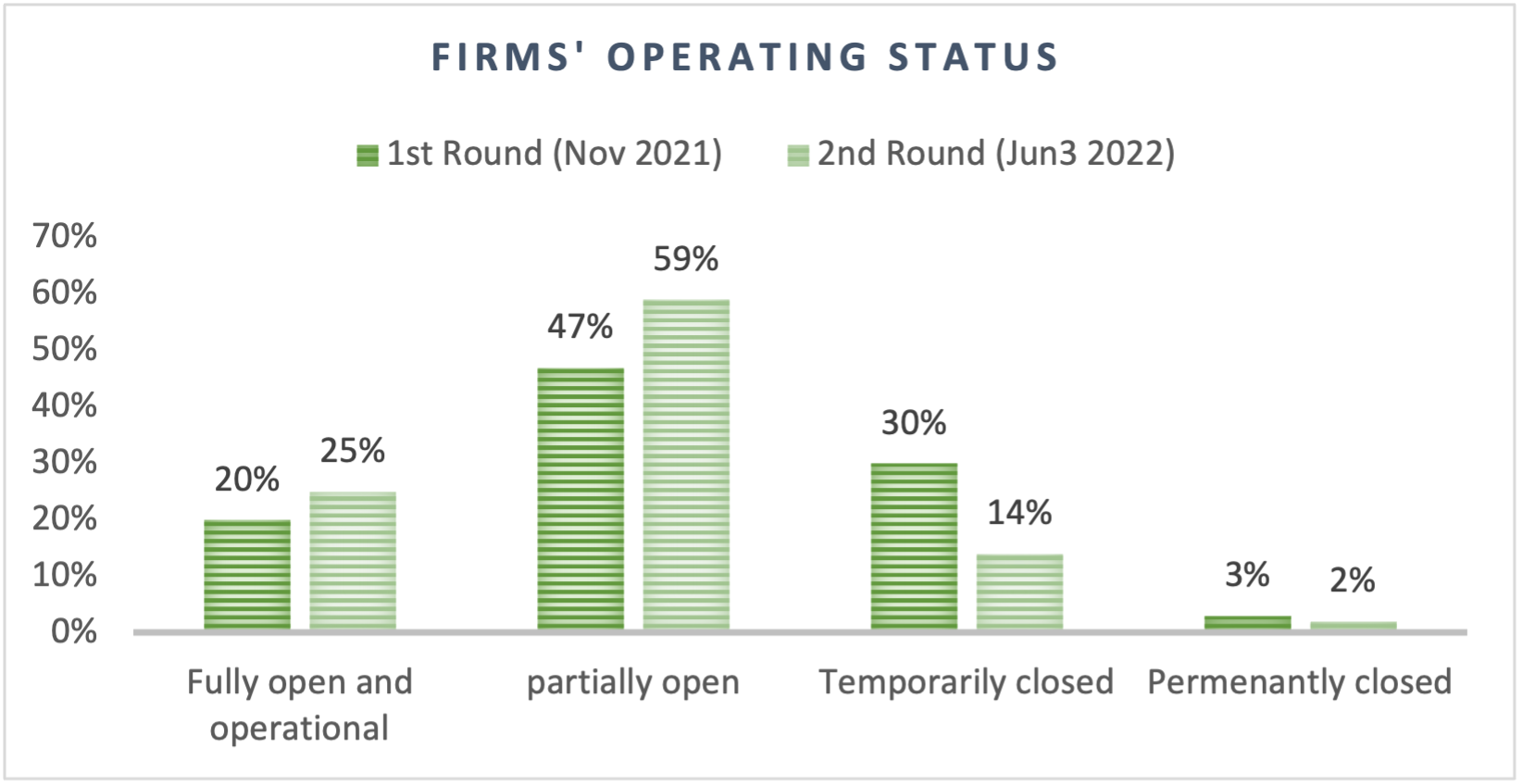
It seems unlikely, however, that Afghanistan will be able to mobilize large private investments in climate-friendly infrastructure or support small and medium-sized enterprises to develop innovative, context-specific solutions on the local level. The latter would particularly require a conducive environment for research and development augmented by government incentives, the likes of which the current authorities are incapable of providing. According to the World Bank’s recent Afghanistan Development Update, even traditionally resilient private economic sector activity in agriculture and basic industries continued to contract in 2022.50 Although the Taliban authorities have tried to attract private investment, overall private sector activity has remained depressed compared to the period before the 2021 crisis. While the initial uncertainty in the market has subsided, a mixture of political and economic crises as well as fiscal constraints and banking limitations continues to deter capital flow and the type of innovative private enterprise that could help address the adverse effects of climate change in the long run.
Afghanistan is between a rock and a hard place. It can neither ignore the expanding impacts of climate-induced fragility nor can it effectively address the challenges enumerated here. Piecemeal interventions by the UN agencies and other humanitarian organizations will fail to mitigate the deepening climate crisis in Afghanistan given its scale. The type of comprehensive and long-term planning and investment required for successful strategies to address climate change cannot happen with the Taliban or under their rule. In such an environment, there will continue to be efforts to inject climate agendas into the limited efforts that focus on averting famine and humanitarian disasters. However, actors and stakeholders need to use caution so that the limited financial resources for humanitarian activity are not further wasted on programs that could fail to build resilience. Moreover, stakeholders should not erroneously assume that the climate agenda is apolitical and thus would provide a collaborative space with the current ruling authorities who have remained intransigent to compromise on issues about education, human rights, and governance. Motivations of access to resources amid an economic crisis could very well drive suggestions or indications of cooperation on climate.
Addressing climate change in the current political economy environment in Afghanistan requires repurposing resources and partnerships. It is imperative to acknowledge that a near-famine equilibrium of the economy will continue for the foreseeable future. Thus, rearchitecting the broader umbrella of humanitarian aid to drive economic activity at the local level, support food supply chains, and gradually decrease dependence on aid for survival should be an initial step. Under current conditions, any minimal efforts to address climate change must merge with those aiming toward fostering greater economic stability and sustainability. For example, exploring the use of climate-induced vulnerability as an opportunity for employment and economic activity funded by resources under the umbrella of humanitarian aid could prove helpful. Moving away from aid programs that distribute food packages and other emergency measures through large UN agencies with heavy overhead costs is a must. Under current conditions, widening the scope of engagement to cover development programs will neither be feasible nor impactful if the governance crisis that limits the space for enterprise, capital flow, and market confidence persists.
Although some of the programs launched recently by UN agencies and other humanitarian organizations are steps in the right direction, they still lack long-term vision and a holistic approach. Some of these programs in the energy and livelihood sectors, for example, partner with the private sector to provide electricity for urban neighborhoods and farming irrigation. Through joint investments, these initiatives develop small-scale solar power substations that provide sustainable energy, employment, and revenue streams. It is important to ensure accountability in these programs, maintain their economic benefits within the country, and avoid the risks of rent-seeking and exploitation of people. Complementing such programs with initiatives in the agriculture sector to build resilience against drought, boost local food production capacities, and revive the domestic economy could have a chance to benefit the population, especially when their gendered effects are controlled to the degree possible.
Any environmental agenda must have a gender-sensitive approach to the impacts of climate change. As benign as climate sounds, it will eventually boil down in practice to people and communities. Climate change, much like any other crisis, disproportionately affects vulnerable communities, such as women, ethno-religious minorities, and indigenous communities. These groups have already been at the receiving end of the Taliban’s oppressive policies. Therefore, it is important in thinking about working on climate change to consider how such activities would address their vulnerabilities. More importantly, given how deeply discriminatory governance, control, and access institutions are under the Taliban, emphasis and caution must be placed on making sure that climate-focused work does not strengthen relationships and reproduce dynamics that breed marginalization and exclusion. Without accounting for equitability, interventions could very well contribute to the effectiveness and efficiency of power structures and systems of control that undermine long-term development and threaten prosperity.
About the Author
Sayed Madadi is a Non-Resident Scholar at the Middle East Institute. His work focuses on the political economy of governance and conflict, climate change and green development. He was previously a Reagan-Fascell Fellow at the National Endowment for Democracy and a Research Scholar at the Center for Governance and Markets. Before that, he led the Joint Technical Secretariat of the Afghanistan peace negotiations in Doha, Qatar, and was Director of the Afghanistan Civil Service Institute in Kabul.
Endnotes
1 “The 10 most affected countries in 2019,” Global Climate Risk Index, GermanWatch, Accessed February 14, 2024, https://www.germanwatch.org/sites/germanwatch.org/files/2021-01/cri-2021_table_10_most_affected_countries_in_2019.jpg.
2 “Afghanistan Country Risk Profile,” INFORM Risk Index 2024, European Commission Disaster Risk Management Knowledge Centre – INFORM, https://drmkc.jrc.ec.europa.eu/inform-index/INFORM-Risk/Country-Risk-Profile.
3 “Afghanistan: The alarming effects of climate change,” UN Office for Coordination of Humanitarian Affairs, August 1, 2023, https://www.unocha.org/news/afghanistan-alarming-effects-climate-change."
4 “Afghanistan Multi-Sectoral Rapid Assessment Form (2020-21),” International Organization for Migration, January 27, 2021, https://afghanistan.iom.int/sites/g/files/tmzbdl1071/files/documents/iom_msraf_floods2020_01262021.pdf.
5 “Land Conflict and Humanitarian Action: A Conflict Sensitive Perspective,” ACAPS, July 26, 2023, https://www.acaps.org/fileadmin/Data_Product/Main_media/20230726_ACAPS_Afghanistan
_analysis_hub_land_conflict_and_humanitarian_action.pdf; Sayed Madadi, Jalil Raunaq, Sakina Amiri, and Amir Behnam, “Law of the Gun: How Local Conflicts Became Extortion Sprees,” KabulNow, January 23, 2024, https://kabulnow.com/2024/01/law-of-the-gun/.
6 Hannah Richtie and Max Roser, “Afghanistan: CO2 Country Profile,” Our World in Data, Accessed February 14, 2024, https://ourworldindata.org/co2/country/afghanistan.
7 Although the Taliban has not published any budget document except a three-months transitional budget after their return to power, leaked documents from their finance ministry shows that more than half of the government spending is earmarked for the security sector. For more information, see Rustam Seerat, “Analyzing the Taliban budget for 2023-24: Prioritizing military spending over citizen welfare,” Zan Times, May 11, 2023, https://zantimes.com/2023/05/11/analyzing-the-taliban-budget-for-2023-24-prioritizing-military-spending-over-citizen-welfare/.
8 “Afghanistan Emergency,” World Food Program, Accessed February 14, 2024, https://www.wfp.org/emergencies/afghanistan-emergency.
9 Hameed Hakimi and Oli Brown, “Climate change must become part of the global agenda in Afghanistan,” Chatham House, March 16, 2022, https://www.chathamhouse.org/2022/03/climate-change-must-become-part-global-agenda-afghanistan.
10 “UN Independent Assessment Report on Afghanistan (S/2023/856),” United Nations Security Council, November 8, 2023, https://www.passblue.com/wp-content/uploads/2023/11/231109-SG-letter-of-8-November-Afghanistan.pdf. On December 29, 2023, the UN Security Council adopted a resolution that supported the recommendations of the assessment, including the appointment of a UN special envoy for Afghanistan.
11 “Afghanistan,” European Commission European Civil Protection and Humanitarian Aid Operations, Accessed February 14, 2024, https://civil-protection-humanitarian-aid.ec.europa.eu/where/asia-and-pacific/afghanistan_en.
12 “EU releases €140 million to support the Afghan people, in particular women and girls,” European Commission, September 20, 2023, https://ec.europa.eu/commission/presscorner/detail/en/IP_23_4524.
13 “Climate Sector,” Donor Tracker by SEEK Development, June 14, 2023, https://donortracker.org/topics/climate.
14 “Islamic Republic of Afghanistan: Intended Nationally Determined Contribution Report,” UN Framework Convention on Climate Change(UNFCCC), September 21, 2015, https://unfccc.int/sites/default/files/NDC/2022-06/INDC_AFG_20150927_FINAL.pdf.
15 Idrees Malyar, “Managing Climate Change Under the De Facto Authorities,” PeaceRep, June 30, 2023, https://peacerep.org/publication/afghanistan-research-network-managing-climate-change/.
16 “Climate Finance and the USD 100 Billion Goal,” OECD, November 16, 2023, https://www.oecd.org/climate-change/finance-usd-100-billion-goal/.
17 “Least developed countries get less than 3% of money needed to transform to face climate change,” International Institute for Environment and Development, July 14, 2021, https://www.iied.org/least-developed-countries-get-less-3-money-needed-transform-face-climate-change.
18 “Adaptation Gap Report 2022: Too Little, Too Slow,” UN Environment Programme, November 1, 2022, https://www.unep.org/resources/adaptation-gap-report-2022.
19 “COP27 Reaches Breakthrough Agreement on New “Loss and Damage” Fund for Vulnerable Countries,” UN Climate Change News, November 20, 2022, https://unfccc.int/news/cop27-reaches-breakthrough-agreement-on-new-loss-and-damage-fund-for-vulnerable-countries.
20 The Taliban hosted a regional conference on Monday, January 29, 2023, where diplomats from Russia, China, Iran, Pakistan, and Central Asia participated. The agenda, however, was heavily focused on political issues with no mention of climate and the environment, particularly ahead of the UN meeting in Doha and in anticipation of the appointment of a UN Special Envoy for Afghanistan. See “Taliban hosts ‘regional’ meeting in Kabul ahead of Doha conference,” Amu TV, January 29, 2024, https://amu.tv/81501/.
21 Ayaz Gul, “Pakistan Turns Up Heat Over Cross-Border Attacks,” Voice of America, October 5, 2023, https://www.voanews.com/a/pakistan-turns-up-heat-over-cross-border-attacks-/7298839.html.
22 Shah Mir Baloch, “Pakistan starts mass deportation of undocumented Afghans,” The Guardian, November 1, 2023, https://www.theguardian.com/global-development/2023/nov/01/pakistan-starts-mass-deportation-of-undocumented-afghans.
23 “Two years since the Taliban took power in Afghanistan, almost 30 million people remain in dire need of assistance as funding shortfalls jeopardise the humanitarian response,” International Rescue Committee, August 10, 2023, https://www.rescue.org/uk/press-release/two-years-taliban-took-power-afghanistan-almost-30-million-people-remain-dire-need.
24 @NajibSadid (Najibullah Sadid), “Cooperation on shared waters was a key discussion issue in recent high-level Taliban official visit to #Iran,” Twitter, November 6, 2023, https://twitter.com/NajibSadid/status/1721510745983111429; Assem Mayar and Roxanna Shapour, “The Long Winding River: Unravelling the water dispute between Afghanistan and Iran,” Afghanistan Analysts Network, https://www.afghanistan-analysts.org/en/reports/economy-development-environment/the-long-winding-river-unravelling-the-water-dispute-between-afghanistan-and-iran/.
25 Meray Ozat, “Afghanistan’s Canal Project Threatens Central Asian Water Security,” Caspian Policy Center, September 5, 2023, https://www.caspianpolicy.org/research/energy-and-economy-program-eep/afghanistans-canal-project-threatens-central-asian-water-security.
26 Niginakhon Saida, “The Taliban’s New Canal Threatens Water Security in Uzbekistan and Turkmenistan,” The Diplomat, July 5, 2023, https://thediplomat.com/2023/07/the-talibans-new-canal-threatens-water-security-in-uzbekistan-and-turkmenistan/.
27 Bismellah Zahidi, “Taliban and Uzbekistan Sign Over $1 Billion Trade Deals,” KabulNow, November 2, 2023,https://kabulnow.com/2023/11/taliban-and-uzbekistan-sign-over-1-billion-trade-deal/.
28 Habib Rahman Qooyash, “Islamic Emirate: No Water Agreement Exists With Neighbors Over Amu River,” ToloNews, September 20, 2023, https://tolonews.com/afghanistan-185186.
There are two regional agreements governing water rights in the Amu Darya basin. Afghanistan is not a party to either of them, which helped Central Asian nations access more water for decades.
For a deeper analysis of water regimes in Central Asia, see Beatrice Mosello, “Water in Central Asia: A Prospect of Conflict or Cooperation?,” Journal of Public & International Affairs, Princeton University, 2008, https://jpia.princeton.edu/sites/g/files/toruqf1661/files/2008-9.pdf.
For a more recent analysis, Lynne O’Donnell, “The Water Wars Are Coming to Central Asia,” Foreign Policy, July 31, 2023, https://foreignpolicy.com/2023/07/31/afghanistan-uzbekistan-water-war-central-asia/.
29 “By the Numbers: Climate Change in Central Asia,” Asian Development Bank, November 23, 2022, https://www.adb.org/news/features/numbers-climate-change-central-asia.
30 Ibid.
31 Christoph N. Wang, “China Belt and Road Initiative (BRI) Investment Report 2023 H1,” Green Finance and Development Center, August 1, 2023, https://greenfdc.org/china-belt-and-road-initiative-bri-investment-report-2023-h1/; Anika Patel, “Experts: How will the next decade of China’s ‘belt and road initiative’ impact climate action?,” CarbonBrief, October 6, 2023, https://www.carbonbrief.org/experts-how-will-the-next-decade-of-chinas-belt-and-road-initiative-impact-climate-action/; Isabel Hilton, “How China’s Big Overseas Initiative Threatens Global Climate Progress,” Yale Environment 360, January 3, 2019, https://e360.yale.edu/features/how-chinas-big-overseas-initiative-threatens-climate-progress.
32 Diksha Madhok, Ehsan Popalzai, and Masoud Popalzai, “A Chinese company has signed an oil extraction deal with Afghanistan’s Taliban,” CNN, January 6, 2023, https://www.cnn.com/2023/01/06/business/china-company-taliban-oil-deal-hnk-intl/index.html.
33 Lea Appulo, “World Water Day: The water impacts of lithium extraction,” Wetlands International, March 22, 2023, https://europe.wetlands.org/blog/world-water-day-the-water-impacts-of-lithium-extraction.
34 After the disastrous 2022 floods, Pakistan has created a ministry in the federal government to work on climate, led by Sherry Rahman. At COP27 in Egypt, Ms. Rehman spearheaded a deal to transfer climate financing from rich countries to poorer ones, one of the only achievements of the global summit. See “How Pakistan emerged as a climate champion,” The Economist, November 24, 2022, https://www.economist.com/asia/2022/11/24/how-pakistan-emerged-as-a-climate-champion; Fred de Sam Lazaro and Sarah Clune Hartman, “Pakistanis build climate-resilient homes in aftermath of devastating floods,” PBS News Hour, January 18, 2023, https://www.pbs.org/newshour/show/pakistanis-build-climate-resilient-homes-in-aftermath-of-devastating-floods.
35 “Central Asian Leaders Address Water Challenges, Security At Summit In Tajikistan,” Radio Free Europe/Radio Liberty, September 15, 2023, https://www.rferl.org/a/central-asia-leaders-summit-tajikistan-azerbaijan-water-resources-security/32594798.html.
36 “Chairman of the Halk Maslahaty invited German companies to participate in the implementation of projects in the water sector of Turkmenistan,” Turkmenistan Golden Age, September 29, 2023, https://turkmenistan.gov.tm/en/post/76141/chairman-halk-maslahaty-invited-german-companies-participate-implementation-projects-water-sector-turkmenistan.
37 “The President of Uzbekistan Witnesses Grid Connection of Masdar Projects Totalling 1.4GW of Clean Energy to the National Grid,” Masdar, December 28, 2023, https://masdar.ae/en/news/newsroom/the-president-of-uzbekistan-witnesses-grid-connection-of-masdar--projects.
38 “Human rights situation in Afghanistan: July-September 2023 update,” UN Assistance Mission for Afghanistan, October 23, 2023, https://unama.unmissions.org/sites/default/files/human_rights_situation_in_afghanistan_jul-sep_2023.pdf;“The Taliban have waged a systematic assault on freedom in Afghanistan, says UN human rights chief,” PBS News Hour, September 12, 2023, https://www.pbs.org/newshour/politics/the-taliban-have-waged-a-systematic-assault-on-freedom-in-afghanistan-says-un-human-rights-chief.
39 Central Afghanistan is predominantly populated by Hazaras, an indigenous Asiatic, mostly Shi’a group who have historically been persecuted by the Taliban. During the last two years, reports of the Taliban and groups affiliated with them targeting Hazaras have increased. See “Afghanistan: Taliban Forcibly Evict Minority Shia,” Human Rights Watch, October 22, 2021, https://www.hrw.org/news/2021/10/22/afghanistan-taliban-forcibly-evict-minority-shia; Sune Engel Rasmussen and Ehsanullah Amiri, “Taliban Evict Hazara Shiite Muslims From Villages, Rewarding Loyalists,” The Wall Street Journal, https://www.wsj.com/articles/taliban-evict-hazara-shiite-muslims-from-villages-rewarding-loyalists-11633009762; Sayed Madadi, Jalil Raunaq, Sakina Amiri, and Amir Behnam, “Law of the Gun: How Local Conflicts Became Extortion Sprees,” KabulNow, January 23, 2024, https://kabulnow.com/2024/01/law-of-the-gun/.
40 Central Afghanistan is predominantly populated by Hazaras, an indigenous Asiatic, mostly Shi’a group who have historically been persecuted by the Taliban. During the last two years, reports of the Taliban and groups affiliated with them targeting Hazaras have increased. See “Afghanistan: Taliban Forcibly Evict Minority Shia,” Human Rights Watch, October 22, 2021, https://www.hrw.org/news/2021/10/22/afghanistan-taliban-forcibly-evict-minority-shia; Sune Engel Rasmussen and Ehsanullah Amiri, “Taliban Evict Hazara Shiite Muslims From Villages, Rewarding Loyalists,” The Wall Street Journal, https://www.wsj.com/articles/taliban-evict-hazara-shiite-muslims-from-villages-rewarding-loyalists-11633009762; Sayed Madadi, Jalil Raunaq, Sakina Amiri, and Amir Behnam, “Law of the Gun: How Local Conflicts Became Extortion Sprees,” KabulNow, January 23, 2024, https://kabulnow.com/2024/01/law-of-the-gun/.
41 “Afghanistan Acute Food Insecurity January 2024 projected outcomes,” Famine Early Warning System Network, January 2024, https://fews.net/central-asia/afghanistan.
42 “Afghanistan Opium Survey 2023,” UN Office of Drugs and Crime, November 2023, https://www.unodc.org/documents/crop-monitoring/Afghanistan/Afghanistan_opium_survey_2023.pdf.
43 Ruchi Kumar, “Charities say Taliban intimidation diverts aid to Taliban members and causes,” National Public Radio, June 23, 2023, https://www.npr.org/sections/goatsandsoda/2023/06/23/1180464339/charities-say-taliban-intimidation-diverts-aid-to-taliban-members-and-causes; Haley Ott and Sami Yousafzai, “U.S. taxpayers helping fund Afghanistan's Taliban? Aid workers say they're forced "to serve the Taliban first," CBS News, April 21, 2023, https://www.cbsnews.com/news/afghanistan-taliban-tax-dollars-after-withdrawal/; “Cash-Strapped Taliban Uses Foreign Aid Intended For Starving Afghans To Pay State Employees,” Radio Free Europe/Radio Liberty, January 25, 2022, https://www.rferl.org/a/taliban-foreign-aid-starving-afghans/31670691.html.
44 “SIGAR 24-01 Evaluation Report,” Special Inspector General for Afghanistan Reconstruction, October 2023, https://www.sigar.mil/pdf/evaluations/SIGAR-24-01-IP.pdf.
45 According to one analysis by the UN Development Program (UNDP), the Taliban’s exclusion of women from public life costs Afghanistan $1 billion every day. See “One Year in Review-Afghanistan since August 2021,” UNDP, October 5, 2022, https://www.undp.org/afghanistan/publications/one-year-review-afghanistan-august-2021.
46 Sophia Jones, “In Afghanistan, climate change complicates future prospects for peace,” National Geographic, February 3, 2020, https://www.nationalgeographic.com/science/article/afghan-struggles-to-rebuild-climate-change-complicates.
47 @NajibSadid (Najibullah Sadid), “had previously warned the NDC about the consequence of not addressing the issue of mobile sand dunes into the Qustepa canal,” Twitter, September 29, 2022, https://twitter.com/NajibSadid/status/1707785273629634852; Sayed Madadi, "Najibullah Sadid: Climate Change in Afghanistan," KabulCast podcast, December 13, 2023, https://www.kabulcast.com/2186734/14141112-najibullah-sadid-climate-change-in-afghanistan.
48 Benjamin Parkin and Fazelmenallah Qazizai, “The Taliban’s black gold: Militants seize on coal to reboot economy,” The Financial Times, August 3, 2022, https://www.ft.com/content/772460fc-5c7b-46ac-ae95-4d59daf3fc87.
49 “The private sector starts to invest in climate adaptation,” The Economist, July 24, 2021, https://www.economist.com/finance-and-economics/2021/07/24/the-private-sector-starts-to-invest-in-climate-adaptation.
The International Energy Agency says the world needs at least $2 trillion by 2030, a fivefold increase from the current $400 billion in annual global investment, which cannot be procured without the private sector. See Prasad Ananthakrishnan, Torsten Ehlers, Charlotte Gardes-Landolfini, and Fabio Natalucci, “Emerging Economies Need Much More Private Financing for Climate Transition,” International Monetary Fund, October 2, 2023, https://www.imf.org/en/Blogs/Articles/2023/10/02/emerging-economies-need-much-more-private-financing-for-climate-transition.
50 “Afghanistan Development Update,” World Bank, October 2023, https://thedocs.worldbank.org/en/doc/210d5f24dc33a3460beff3447fceadcf-0310012023/original/Afghanistan-Development-Update-20231003-final.pdf.












